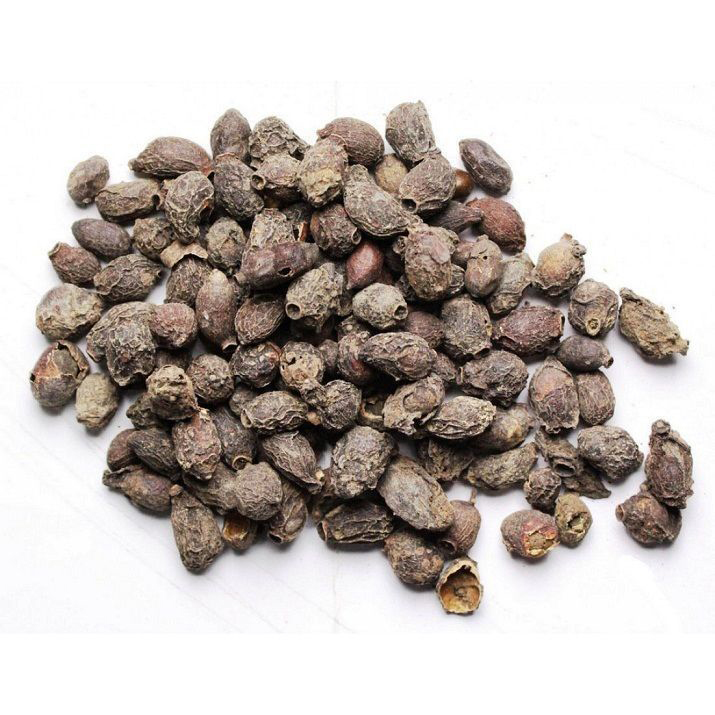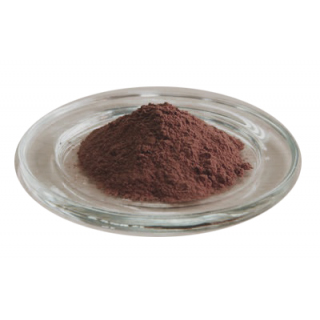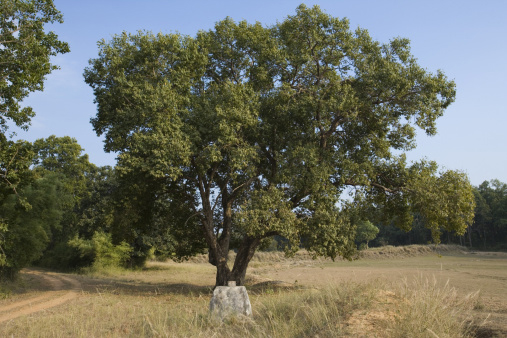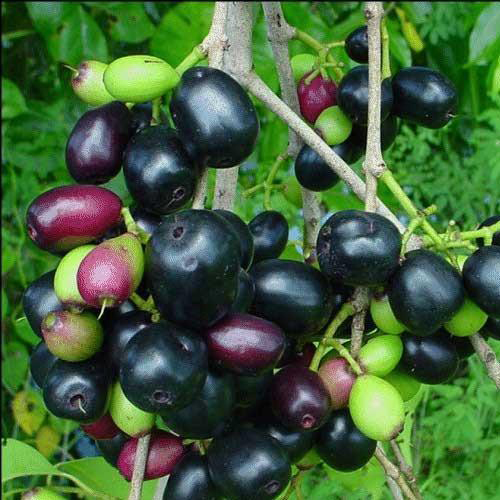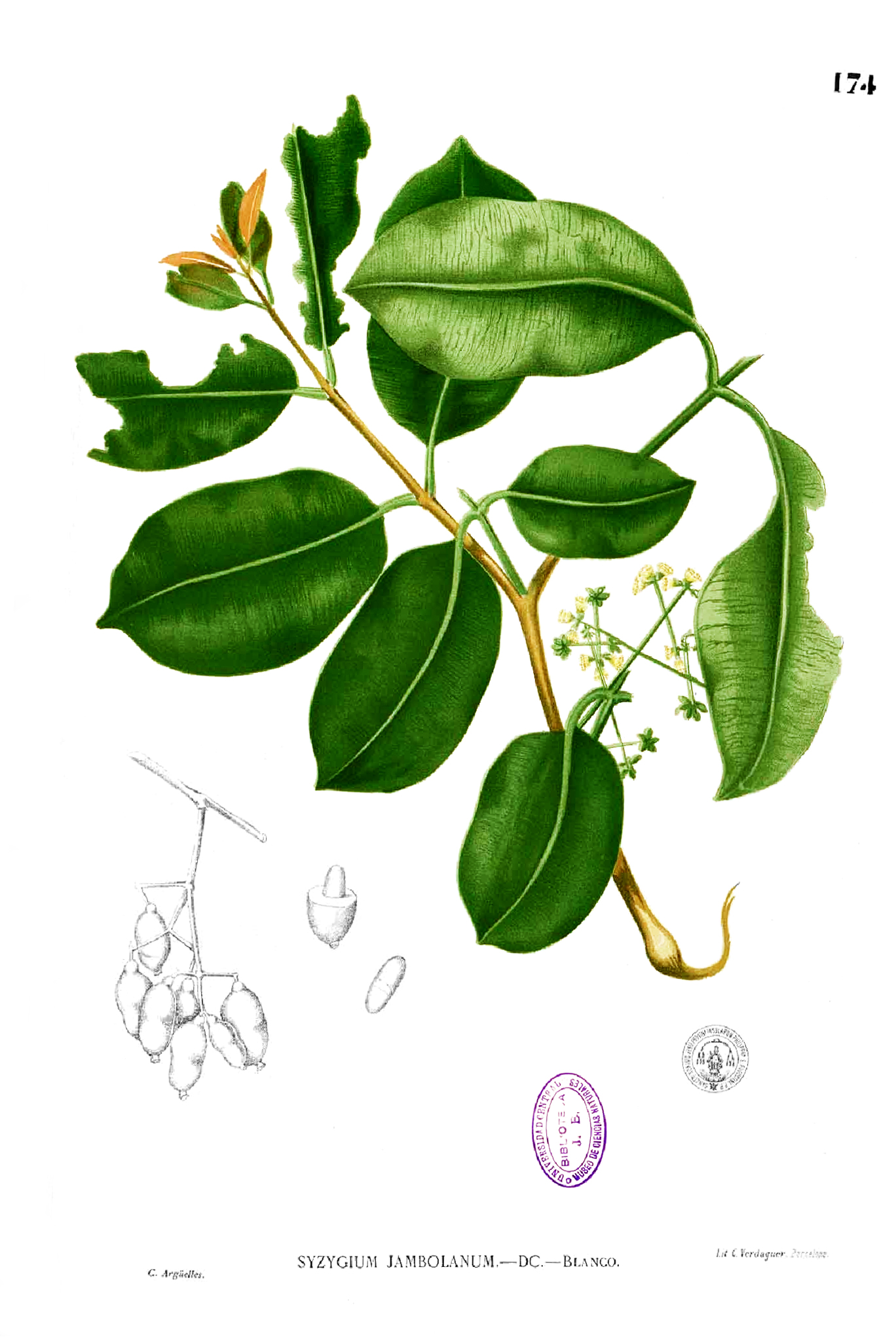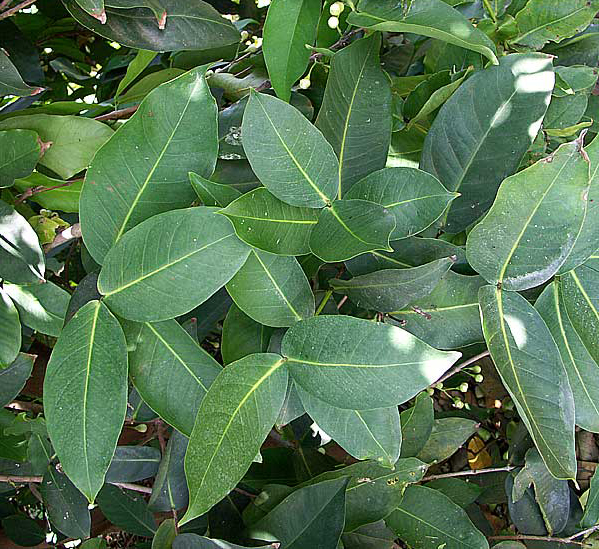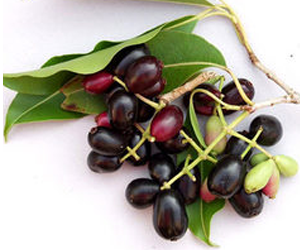 A relatively rapid developing varieties, it may achieve heights as high as 30 m and may live a lot more than a hundred years. Its lustrous leaves offers shade and is also developed simply for its decorative benefit. In the bottom of the tree, the bark is tough and also dark grey, turning into lighter grey and smoother higher. The wood is powerful and is also water-resistant. Due to this it is utilized in railway sleepers and also to install motors in wells. It is usually utilized to make inexpensive furniture and village houses although it is comparatively difficult to work on. The leaves that are an fragrance much like turpentine, are pinkish whenever young, changing into a leather like, shiny dark green having a yellow midrib since they mature. The foliage is utilized as food for animals, since they have great nutrients and vitamins.
A relatively rapid developing varieties, it may achieve heights as high as 30 m and may live a lot more than a hundred years. Its lustrous leaves offers shade and is also developed simply for its decorative benefit. In the bottom of the tree, the bark is tough and also dark grey, turning into lighter grey and smoother higher. The wood is powerful and is also water-resistant. Due to this it is utilized in railway sleepers and also to install motors in wells. It is usually utilized to make inexpensive furniture and village houses although it is comparatively difficult to work on. The leaves that are an fragrance much like turpentine, are pinkish whenever young, changing into a leather like, shiny dark green having a yellow midrib since they mature. The foliage is utilized as food for animals, since they have great nutrients and vitamins.
Jambul trees start blooming from March to April. The flowers of jambul are aromatic and tiny, about 5 mm in diameter. The fruits develop by May or June and look like big berries. The fruit is oblong, ovoid, begins green and turns pink to shining crimson black since it develops. A variant of the tree creates white coloured fruit. The fruit offers a mixture of fairly sweet, slightly sour and also astringent taste and has a tendency to colour the tongue purple. The seed is additionally utilized in numerous substitute therapeutic systems just like Ayurveda (to manage diabetic issues, as an example. Unani and also Traditional Chinese medicine for digestive ailments. The leaves and also bark can be used for managing blood pressure level and also gum disease. Wine and vinegar can also be produced from the fruit. It features a higher source in vitamin A and also vitamin C. Jambul have been distributed abroad from India by Indian emigrants and also at present is normal in former tropical British colonies.
Health Benefits of Eugenia Jambolana
Eugenia jambolana, or even jambul, is definitely an evergreen tree indigenous to exotic regions of India and parts of Asia. It creates groups of huge, dark-colored, berry-like fruits which are consumed raw, extracted as juice or even cooked. The seeds, foliage, bark and also wood of Eugenia jambolana offer sensible as well as possible therapeutic advantages.
1. Cholesterol Reduction
Eugenia jambolana seed kernel might help reduce cholesterol levels in diabetes sufferers, in accordance with research printed within the September 2005 issue of the journal “Food and Chemical Toxicology.” Within the animal research, doses of 100 milligrams for each kilogram bodyweight of Eugenia jambolana seed kernel extract renewed cholesterol and also triglyceride levels to close normal and worked equally to the regular anti-diabetes drug glibenclamide. Scientists mentioned that flavonoid anti-oxidants along with other energetic components of the plant might be liable for the cholesterol-lowering advantages.
2. Insecticide
Insecticidal results of Eugenia jambolana were shown in the research released in the November 2012 issue of the journal “Environmental Science and Pollution Research International.” The plant extract killed larvae of Aedes aegypti, the mosquito which transfers tropical illness dengue fever. However, it absolutely was not as effective as Solidago canadensis, an additional plant analyzed within the study. Scientists noticed a complete effect between the plant extracts and also deltamethrin, a regular chemical insecticide. Results of the research show that Eugenia jambolana exhibits possible as an environmentally safe, natural method for managing mosquito communities.
3. Antibacterial
Eugenia jambolana seed extract might help in the control over several drug-resistant bacterial infections, in accordance with an investigation printed within the June 2012 issue of the journal “Microbiological Research.” Eugenia jambolana restricted all strains of bacteria within the test tube research. The seed extract didn’t harm human red blood cells and was non-toxic in animal tests. These types of initial outcomes support the conventional usage of Eugenia jambolana to deal with microbe infections and show its possibility of development like a new antimicrobial agent.
4. Blood Sugar Management
Blood sugar-lowering advantages of Eugenia jambolana were shown in the research published in the April 2009 issue of the “Indian Journal of Physiology and Pharmacology.” Within the animal research, doses of 200 milligrams per kilogram bodyweight reduced blood glucose levels by the 10th day of supplements. Insulin levels as well as amounts of glycosylated hemoglobin — a blood marker which reflects blood glucose levels for the earlier 3 months — were also reduced to near-normal levels after Thirty days. In another portion of the research, Eugenia jambolana shielded from stomach ulcer because of over-secretion of gastric acid.
5. Stomach Aid
Diabetes frequently boosts chance for peptic ulceration. Eugenia jambolana seeds may possibly control ulcers by reduction of gastric secretions, in accordance with Chaturvedi. In reality, treatment using the plant decreases acid-pepsin output much better than the anti-diabetic drug glibenclamide, Chaturvedi notes. Eugenia jambolana also improves mucin and also mucosal glycoprotein manufacturing within your stomach, which boosts your stomach’s mucus-lined protective layer, in accordance with a 2007 study printed in the “Indian Journal of Physiology and Pharmacology.”
6. Liver Protection
Eugenia jambolana could help safeguard your liver, in accordance with a 2009 research published within the “Indian Journal of Pharmacology.” This plant seems to assist with liver cell regrowth, which makes it a possibly efficient therapy against liver injury, in accordance with research authors S.S. Sisodia and M. Bhatnagar. This particular result is dose-dependent, which means that greater doses of the seed extract have got more powerful effects, the research authors note.
7. Anti-Cancer Action
Eugenia jambolana might be beneficial in avoiding estrogen-dependent cancer of the breast because of its anthocyanin content, in accordance with a 2010 study within the “Journal of Agricultural Food Chemistry.” Anthocyanins may possibly control the enzyme accountable for estrogen synthesis known as aromatase. Within this laboratory research, the extract restricted some kinds of breast cancer cells. Much more scientific studies are required to determine whether the plant could be secure and efficient in females for the same objective. Eugenia jambolana may also have anti-oxidant action, in accordance with the 2007 “Indian Journal of Physiology and Pharmacology” research.
8. Diabetes
The jambul fruit can be a particular medication for diabetes sufferers because of its effect on the pancreas. Jambul seeds include a glycoside, called jamboline that obstructs the transformation of starch into sugar in cases of elevated blood sugar levels. In the management of this ailment, the seeds, fruits and also fruit juice each are useful. Jambul seeds have been discovered to boost the insulin secretion from the pancreas.
The seeds could be dried out and powdered; this particular powder ought to be provided Three or four times each day by combining along with water to assist to lower sugar within the urine. Additionally, it reduces the unappeasable thirst. To deal with diabetic issues, the interior bark of the jambul tree can also be used. The dried bark is burnt off and ash of it needs to be provided to diabetic patient on empty stomach along with water daily each morning, afternoon as well as in the night.
9. Polyuria
Seeds of the jambul fruit may also be useful in case of excessive urine production or polyuria. To deal with polyuria, the powder of the seeds ought to be ingested in 1 gm dose each morning and also evening.
10. Piles
Jambul fruits assist to deal with piles and also liver problems. This particular well-known fruit is an efficient food medication for the treatment of bleeding piles. Throughout its season, the fruit needs to be ingested with salt each morning. Fresh jambul fruits may also be a highly effective medication for bleeding piles if taken along with honey.
11. Liver Disorders
The jambul fruits include natural acids that play an important role within the release of digestive enzymes and also promote the functions of liver. By ingesting Jambul on a regular basis, the body’s all round digestion power is improved upon. The well-known physician of the historical India, Charaka utilized jambul within the management of enlargement of the liver.
12. Diarrhea and Dysentery
By consuming Jambul fruit, you are able to deal with diarrhea and also dysentery conditions effortlessly. The powder of the Jambul’s seed is an efficient treatment for that. During these circumstances, roughly 5 to 10 grams of the powder needs to be ingested along with butter–milk. A higher power of tannic and also Gallic acid contained in an infusion of the tender leaves is additionally a highly effective medication for diarrhea and also dysentery. For this function, a decoction of the bark is additionally beneficial if taken with honey.
13. Sore Throat
Sore throat is healed by the use of water diluted juice obtained from jambul fruit. Infestations of ringworm towards scalp and skin is handled by use of lotion made from jambul fruit.
More about Eugenia Jambolana
Nutritional value of Eugenia Jambolana
| Nutritional value per 100 g (3.5 oz) | |
| Dietary fiber | 0.6 g |
| Carbohydrates | 14 g |
| Energy | 251 kJ (60 kcal) |
| Fat | 0.23 g |
| Protein | 0.995 g |
| Water | 84.75 g |
| Calcium | 11.65 mg (1%) |
| Iron | 1.41 mg (11%) |
| Magnesium | 35 mg (10%) |
| Niacin (vit. B3) | 0.245 mg (2%) |
| Phosphorus | 15.6 mg (2%) |
| Potassium | 55 mg (1%) |
| Riboflavin (vit. B2) | 0.009 mg (1%) |
| Sodium | 26.2 mg (2%) |
| Thiamine (vit. B1) | 0.019 mg (2%) |
| Vitamin B6 | 0.038 mg (3%) |
| Vitamin C | 11.85 mg (14%) |
Uses of Various Parts of the Jamun Tree
- The wood can be used in making inexpensive furniture, railway sleepers and as a basis to install motors in wells since the wood isn’t just robust yet supports moisture too. Additionally it is utilized to make agricultural tools.
- The foliage is utilized to beautify marriage pandals.
- The seeds are utilized to make herbal teas to use by diabetics.
- The fruits are utilized to prepare vinegar, wines, jams, jellies, squashes etc.
Precautions or Warning:
- The jambul fruit shouldn’t be consumed excessively since it is not good for throat and also chest. Its unnecessary use might cause coughing, buildup of sputum within the lungs, and soreness to the chest and also throat.
- Eat jamun soon after meals.
- In case of those getting swelling on the human body, ladies who have just delivered and those that suffer continuous nausea don’t consume it.
- Always spread rock salt just before ingesting jamun.
- If you are feeling anxious after consuming jamun, consume buttermilk to which several salt have been added or even consume dried out ginger, amla.
- Over ripe fruit may cause hyperacidity and also gas tetention within the stomach. In such a circumstance take 1/2 tsp roasted cumin powder with a pinch of black salt.
- Never consume milk products after enjoying jamun.


